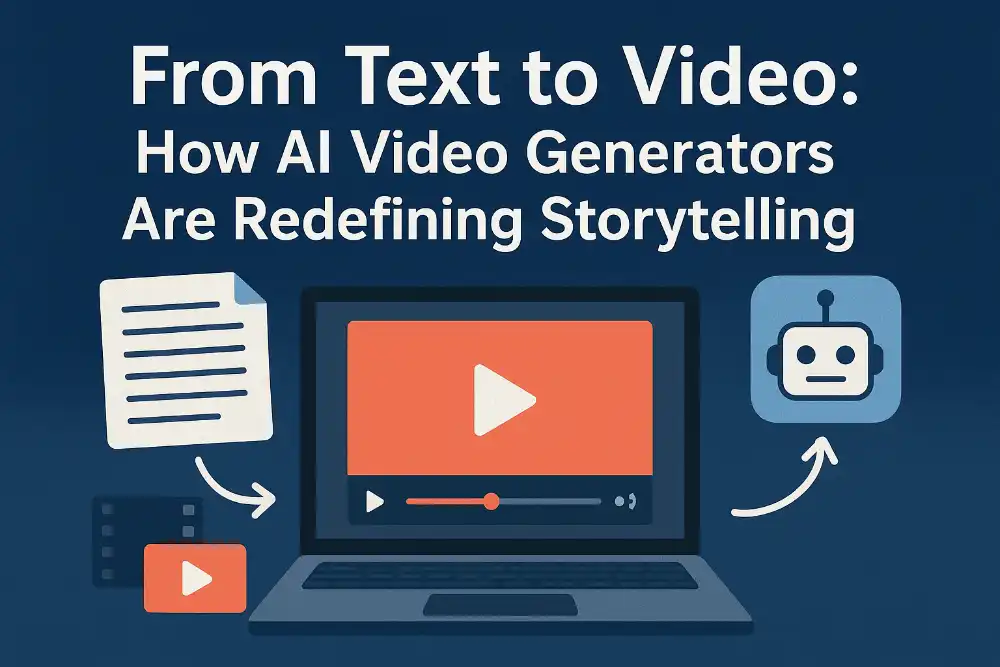AI Story Writing Tools: A Comprehensive Guide
TL;DR
Introduction: The Rise of AI in Storytelling
Okay, so ai is writing stories now, huh? Seems kinda wild, doesn't it? But you know what, it's also pretty interesting to see how things are CHANGING.
- Writing ain't what it used to be, is it? We started with quills, moved to typewriters, and now? ai's in the mix.
- These ai tools are making waves in creative writing, that's for sure, and it's changing how the industry operates. (AI Writing Vs. Human Writing: How Software Is Revolutionizing ...)
- It's not just books, either; think about marketing copy, scripts for videos, even chatbots are getting in on the ai storytelling action.
So, what's next? Well, let's dive a little deeper, shall we?
What are AI Story Writing Tools?
So, what even are these ai story writing tools anyway? Well, they're basically software that uses artificial intelligence to help you write stories. Simple enough, right? But there's a lot going on under the hood, honestly.
- They often use things like natural language processing (nlp) and machine learning to generate text, suggest plot points, and even create characters. NLP helps the ai understand and generate human-like text, while machine learning allows it to learn from vast amounts of existing stories to improve its output. Kinda spooky, but also kinda cool.
- Think of it like this: you give the ai a prompt or some keywords, and it spits out a story based on that. It's not perfect, of course, but it can give you a starting point or help you get past that dreaded writer's block.
- Plus, some tools are really specific and can help with things like generating character bios or even entire plot outlines. It's like having a brainstorming partner that never runs out of ideas, even if some of them are a little weird.
Now, let's talk about why you might actually want to use these things.
Top AI Story Writing Tools: A Detailed Comparison
Rytr's in the mix, huh? Okay, let's see what this ai tool is all about. I mean, with so many options popping up, it's hard to know which one's actually worth your time.
- Rytr has a bunch of different writing modes, from blog outlines to, yep, even story writing. (Rytr: Free AI Writer, Content Generator & Writing Assistant) You can choose from different tones, too, like "convincing" or "humorous". That's kinda neat, I guess, if you're struggling to find the right voice.
- Accessibility-wise, they have a free plan that lets you generate a certain number of characters per month. Not a TON, but enough to get a feel for it. Subscriptions after that, of course.
- For strengths, it's quick and easy to use, and might be good for brainstorming ideas. On the other hand, it's not gonna write your novel for you. I mean, the output can be a little generic, and it definitely needs a human touch to make it really shine.
Imagine you're a marketing manager at a small e-commerce business. You need to write a product description for a new line of handmade soaps. You punch in some keywords like "natural," "organic," and "lavender," and Rytr spits out a few different versions. You select the "creative" tone, and then use Rytr's ability to generate variations to get a few options. You tweak one, add a bit more personality, and boom—you've got a product description ready to go. Not bad, huh?
Or picture this: you're a content creator who's making videos for YouTube and you need a video script. You give Rytr a prompt like "script for a funny video about a cat who thinks it's a dog," and it gives you a basic outline and some dialogue. You can then use Rytr's "expand" feature to flesh out certain sections or ask it to rewrite dialogue in a more casual tone. You may still need to add your personal touch to it, but it's better than staring at a blank screen.
But, you know, it ain't perfect. I saw someone on YouTube talk about how the outputs can sometimes be repetitive, so that's something to keep in mind.
It's kinda like having a really enthusiastic intern; they're eager to help, but you still gotta guide them.
Now, let's dive into another popular tool, Sudowrite, and see how it stacks up.
Sudowrite is designed more for fiction writers, and it really shines when it comes to helping you flesh out your story. It's got features like "Write" which can generate text in your style, "Describe" which helps you add sensory details, and "Brainstorm" for generating plot ideas or character names.
- Write: This is where Sudowrite really flexes. You can give it a prompt, and it'll continue writing in your established voice and style. It's not just spitting out generic sentences; it tries to mimic your rhythm and word choices.
- Describe: Struggling to describe a scene? Sudowrite's "Describe" feature can offer up vivid sensory details – what a room smells like, the texture of a fabric, the sounds of a bustling market. It's great for adding depth and immersion.
- Brainstorm: Stuck on a plot point or need a unique character name? Sudowrite's brainstorming tools can offer a variety of suggestions, from plot twists to character archetypes.
Sudowrite is a paid tool, and it's priced based on usage, so it's more of an investment for serious writers. Its strength lies in its ability to integrate deeply into the writing process, acting as a co-pilot rather than just a text generator. It's less about churning out quick marketing copy and more about enhancing the creative flow for novelists and screenwriters.
Now that we've looked at some specific tools, let's talk about how to get the most out of any AI story writing assistant you choose.
How to Effectively Use AI Story Writing Tools
Okay, so you got your ai tool – now what? Don't just expect it to write a best-seller on its own! Think of it more like a super-powered assistant.
- Be specific: The more detail you give it in your prompts, the better the results. "Write a fantasy story about a dragon" is way less useful than "Write a fantasy story about a grumpy old dragon who runs a bakery in a small village."
- Outline first: Don't just throw keywords at it; give it a structure to work with. This helps keep the ai focused and on track.
- Edit, edit, edit: This is crucial! ai-generated content is a starting point, not the final product. Inject your own voice, style, and creativity to make it shine.
Next up, let's talk about some of the limitations you might run into.
Ethical Considerations and Limitations
Okay, so ai writing stories, huh? It's not all sunshine and rainbows; there's definitely some thorny ethical stuff to consider. Like, who owns the copyright when an ai writes something? It's a real head-scratcher.
- Copyright Conundrums: Is it the user who prompted the ai? The developers of the ai? Or does the story just... belong to everyone? These are the questions lawyers are probably sweating over right now.
- Bias Alert: ai learns from data, and if that data is biased, guess what? The ai's stories will be too. Think about it: if an ai is mostly trained on stories with male protagonists, it might struggle to write compelling female characters. This bias occurs because AI learns from the vast amounts of text it's trained on, and if that text reflects existing societal biases, the AI will likely perpetuate them.
- Emotional Depth? Not Really: ai can mimic human emotion, but can it truly understand it? Probably not. That's why ai-generated stories can sometimes feel a bit flat, lacking that real, gut-wrenching emotional punch.
Imagine a hospital using ai to generate patient stories for marketing. If the ai isn't carefully trained, it could accidentally reveal sensitive patient information or perpetuate harmful stereotypes about certain patient groups. Not good, right?
Or, picture this: a retail company uses ai to write product descriptions, but the ai keeps using the same tired clichés, making all the products sound generic and uninspired. It needs a human to step in and inject some real creativity, ensuring the descriptions are not only accurate but also engaging and authentic, avoiding the pitfall of misrepresentation.
So, what's next? Let's look at the future of storytelling and where it might be going.
The Future of AI and Storytelling
The crystal ball of ai and storytelling? It's kinda hazy, but here's what might come next. Will robots replace authors? Nah, probably not entirely.
- Expect ai to keep evolving, getting better at understanding what makes a story tick. More nuanced plots, characters that don't feel like cardboard cutouts – that kinda thing.
- Personalized narratives could become a thing. Imagine ai crafting a story just for you, based on your interests. Interactive storytelling, where you make choices that affect the plot, could blow up, too.
- Human creativity still matters. Think of ai as a collaborator, not a replacement. We'll be using it to brainstorm, edit, and refine our ideas.
Here's the thing: ai can generate text, but can it bring the soul? Can it capture that weird, human spark that makes a story truly sing? That's where we come in.
Ultimately, the future is probably a mix of both, with ai tools helping us tell better, more engaging stories. And that's-- pretty cool, right?



